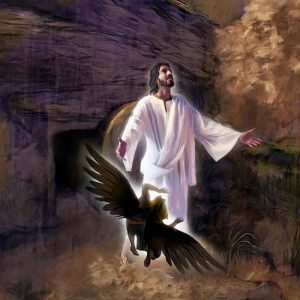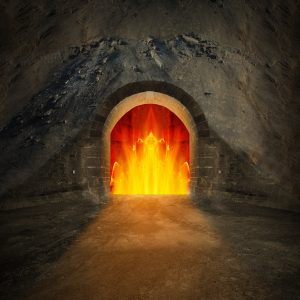
Shownotes
Welcome to Day 1566 of our Wisdom-Trek, and thank you for joining me.
I am Guthrie Chamberlain, Your Guide to Wisdom
Supernatural Intent – Worldview Wednesday
Welcome to Wisdom-Trek with Gramps! Wisdom is the final frontier in gaining true knowledge. Our mission is to create a legacy of wisdom, seek out discernment and insights, and boldly grow where few have chosen to grow before. Hello, my friend; this is Gramps; thanks for coming along on our journey to increase Wisdom and Create a Living Legacy. Today is Day 1566 of our Trek, and it is Worldview Wednesday. Creating a Biblical Worldview is essential to have a proper perspective on today’s current events. To establish a Biblical Worldview, you must have a proper understanding of God and His Word. This week, we will continue reviewing the book from Dr. Michael S Heiser titled “Supernatural.” The book is an abbreviated version of his more comprehensive book, “The Unseen Realm.” I highly recommend both of these books. Creating a Biblical Worldview based on how the Old and New Testaments connect with God’s overall plan for humanity is essential. This book review will help us understand what the Bible teaches about the unseen world, and why it matters.
Supernatural Intent
In the last chapter, we saw how the Old Testament presents the messiah by hiding him in plain sight. The key to God’s plan to restore Eden and redeem humanity was for the messiah, Jesus, to die on the cross and then rise from the dead.
Only by becoming a man could God ensure that a human king from David’s line would rule over his people without falling into sin and straying spiritually. Only if that king died in the place of his people and rose from the dead could God rightly judge sin and provide salvation all at the same time. Only by the messiah’s death and resurrection would fallen people still have a place in God’s family council, ruling in that renewed Edenic kingdom, as originally planned.
But think about all that required: Jesus had to somehow make sure the supernatural powers of darkness manipulated men to kill him—without understanding what they were doing. As Paul had said to the Corinthians (1 Corinthians 2:8), But the rulers of this world have not understood it; if they had, they would not have crucified our glorious Lord.
The life and ministry of Jesus may make more sense when viewed against that backdrop. It’s easy for readers of the New Testament, for instance, to get the impression that Jesus’ ministry leading up to the cross was somewhat random. After all, the Gospels don’t always present the same episodes—for example, the birth of Jesus is found in only two of them (Matthew and Luke), and only one mentions the wise men (Matthew 2). Sometimes scenes appear in a slightly different order in different gospels. But those acts of Jesus recorded in the Gospels leading up to the crucifixion—healing the sick, preaching about the kingdom of God, forgiving sinners, confronting hypocrisy—were more than the random acts of a traveling wise man who occasionally did miraculous things. There’s more going on in the gospel stories than meets the eye. There’s an essential subtext to what Jesus was doing.
Outwitting Evil

The event that marked the beginning of Jesus’ public ministry was his baptism. It was there that God publicly identified Jesus as his Son (Mark 1:11), and there that John the Baptist identified him in John 1:29 “Look! The Lamb of God who takes away the sin of the world! When we read those words from John, we think immediately about the crucifixion. But John’s disciples weren’t thinking about that. Frankly, no one was. When, close to the end of his ministry—over three years after his baptism—Jesus began to speak of his death, his disciples rejected the idea (Matthew 17:22–23; Mark 9:30–32). The last thing they expected to hear from their Lord was that he was going to die soon. That was crazy talk. They didn’t understand Jesus’ death on the cross had been the plan from the beginning. Why didn’t they? Because, as we discussed in the previous chapter, the plan wasn’t presented in the Old Testament with open clarity.
After Jesus’ baptism, he was driven into the wilderness by the Spirit to confront Satan (Matthew 4:1; Mark 1:12; Luke 4:1–13). That the Devil came to tempt Jesus tells us Satan knew who Jesus was—he was the messiah on a mission to re-install God’s “home rule” on earth. After all, the “anointed one” (messiah) would be a king in the line of David. Satan, the “ruler of this world” (John 12:31), understood Jesus would set his sights on Satan’s dominion—the nations God had cast aside at the Tower of Babel before creating Israel (Deuteronomy 4:19–20; 32:8–9).
Most of us recall the scene between Jesus and Satan. Satan tempted Jesus three times (Matthew 4:3–11). Satan’s third strategy for getting Jesus to violate his relationship with God was to offer the Son of God the nations of the world (Matthew 4:8–9), the very thing he presumed Jesus had come to reclaim:
Next, the devil took him to the peak of a very high mountain and showed him all the kingdoms of the world and their glory. “I will give it all to you,” he said, “if you will kneel down and worship me.”
Satan’s proposal was a clever altering of God’s plan. It would produce the result God desired—retrieval of the nations he had disinherited from being his people. Mission accomplished. All Jesus had to do was worship Satan instead of God.
Satan’s offer reveals that he hadn’t yet realized God’s plan required Jesus’ death. Jesus didn’t tip him off, either. He didn’t explain his refusal. He simply told Satan to get lost. God would take back what was his when and how he wanted. The mission of Jesus wasn’t just about ruling all the nations. It was about rebuilding a family. Including in that family people from all nations, not only Israel, meant that sin must be atoned for. As he’d originally planned, God’s rule would involve his children. The cross was essential to redeeming humanity and, therefore, putting God’s plan into place. Jesus wasn’t going to be tricked—but the Devil would be, in due time.
A Taste of Eden
Immediately after the temptation in the desert, Jesus did two things: called his first disciples (Peter, Andrew, James, and John) and healed a demon-possessed man (Mark 1:16–28; Luke 4:31–5:11). Both the calling of disciples and healing continued, forming the beginning of a pattern. As he called more disciples, he gave them the power to cast out demons and heal people of every disease, handicap, and condition (Luke 9:1–5).
Jesus initially called twelve disciples. The number isn’t accidental. It corresponds to the twelve tribes of Israel. Jesus began the kingdom plan with Israel in view. They are, after all, God’s portion, chosen above all the other nations (Deuteronomy 32:8–9). Paul would later view the spread of the gospel the same way—start with the Jews, then go to the Gentiles (Romans 1:16–17).
Jesus didn’t stop with the Twelve. In Luke 10, he commissioned seventy more people to heal and cast out demons (Luke 10:1, 9, 17). That number wasn’t accidental. It’s the number of nations listed in Genesis 10—the nations God cast aside at the Tower of Babel event and placed under the dominion of lesser gods (Deuteronomy 4:19–20; 32:8–9). Some translations have seventy-two, rather than seventy, in these verses. That’s because some ancient manuscripts of the Old Testament present the names of the nations in Genesis 10 in such a way that they add up to seventy-two. Either way, the point is the same—the sending of these men corresponds to the number of the nations in Genesis 10. Just as the calling of the Twelve was a sign that the kingdom had come to Israel, so the sending of the seventy signaled that the kingdom would take back the nations.
When the seventy return (Luke 10:17), Jesus’ response is telling: “Yes,” he told them, “I saw Satan fall from heaven like lightning! (Luke 10:18). The messaging is dramatic: The great reversal was underway. Satan would no longer have any claim over humanity once people belonged to Jesus. His access to God to “accuse believers” (Revelation 12:10) was over. He was a prosecutor without a case.
Come and Get Me

After three years of preaching about the coming kingdom of God, showing people God’s love, and demonstrating what life in an Edenic world would look like, Jesus began to prepare for the end—for his real purpose.
Just before what would become his final journey to Jerusalem, Jesus took the disciples to the far north of Israel. He needed to provoke the crucifixion. He couldn’t have picked a better place to throw down the gauntlet to the supernatural powers.
Jesus brought the disciples to a place called Caesarea Philippi. But that was its Roman name. In Old Testament times, the region was called Bashan. We’ve talked about it before, in chapter 9. Bashan was considered the gateway to the realm of the dead—the gates of hell. Caesarea Philippi is situated at the foot of Mount Hermon, the place where, in Jewish thinking, the sons of God came to earth in the rebellion described in Genesis 6:1–4. In a nutshell, in Old Testament times, Bashan and Hermon were ground zero for the evil cosmic powers.
It was at this place that Jesus asked his well-known question and dialog in Matthew 16:15-18, Then he asked them, “But who do you say I am?”
Simon Peter answered, “You are the Messiah, the Son of the living God.”
Jesus replied, “You are blessed, Simon son of John, because my Father in heaven has revealed this to you. You did not learn this from any human being. Now I say to you that you are Peter (which means ‘rock’), and upon this rock, I will build my church, and all the powers of hell will not conquer it
The identification of the “rock” Jesus referred to has been debated for centuries. The key to understanding the term is the area’s geography. Caesarea Philippi sits in the far northern region of Bashan. In Old Testament times, this area was thought to contain gateways to the realm of the dead. Caesarea Philippi sits at the foot of a mountain. The “rock” is that mountain. The “gates of hell” marks the very place where Jesus and his disciples were standing.
Jesus was challenging the powers of darkness. At the fall, humanity lost eternal life with God and earned a fate of death and eternal separation from God. The lord of the dead—the Serpent, known as Satan and the Devil—had claim over humanity. Every human would join him in the realm of the dead. But God had other ideas. The secret plan to send Jesus to pay the penalty for humanity’s sin would be a frontal assault on the gates of hell. The lord of the dead and his forces would not be able to withstand the kingdom of God. In essence, in that passage in Matthew 16, Jesus goes to the Devil’s front door and challenges his claim. Jesus wanted to provoke Satan. Why? Because it was time for Jesus to die to propel God’s secret plan into motion.
As if that verbal challenge wasn’t enough, Jesus went one step further. Matthew, Mark, and Luke all agree that the next event in the ministry of Jesus was the transfiguration. Mark 9:2–8 reads:
Six days later Jesus took Peter, James, and John, and led them up a high mountain to be alone. As the men watched, Jesus’ appearance was transformed, and his clothes became dazzling white, far whiter than any earthly bleach could ever make them. Then Elijah and Moses appeared and began talking with Jesus.
Peter exclaimed, “Rabbi, it’s wonderful for us to be here! Let’s make three shelters as memorials—one for you, one for Moses, and one for Elijah.” He said this because he didn’t really know what else to say, for they were all terrified.
Then a cloud overshadowed them, and a voice from the cloud said, “This is my dearly loved Son. Listen to him.” Suddenly, when they looked around, Moses and Elijah were gone, and they saw only Jesus with them.
The transfiguration takes place on Mount Hermon. Jesus picked this very spot to reveal to Peter, James, and John precisely who he was—the embodied glory of God. He was putting Satan and the powers of darkness on notice: I’ve come to earth to take back what is mine. The kingdom of God is at hand. In effect: “I’m here—now do something about it.”
It’s no accident that immediately after the transfiguration, Jesus turned toward Jerusalem and began telling his disciples he was going to die there. They didn’t want to hear it. But Jesus had baited Satan and the rest of the evil powers into action. There would be a sense of urgency to get rid of him. And that’s just what Jesus wanted. His death was the key to everything.
Why This Matters
Jesus’ ministry was intentional. He had a clear view of his role in reviving the kingdom of God on earth, so it would progress until the day he returned, a day that would usher in a global Eden.
Our lives are not as pivotal as his, but like the disciples, each of us has a true role to fulfill. We need to live as if we believe that. Believers brought into God’s family council are brought in to be not observers but participants (Colossians 1:13).
Among the intentions of Jesus was to show people what Eden had been like, and what life with God would be. In God’s family and God’s rule, there will be no disease and physical imperfection. There will also be no hostile powers. God’s ultimate kingdom is bigger than a garden, wider than Israel. The kingdom will be global. It will include all nations. And it will be everything Eden was—heaven on earth.
Our task is to imitate Jesus. Like him, we can care for both body and soul of our fellow imagers, leading them to faith in the King and strengthening their resolve to be loyal to him. It doesn’t necessarily take supernatural power to “bind up the brokenhearted” and “proclaim liberty to the captives” in the steps of the Messiah (Isaiah 61:1). Still, these are supernatural acts at the core. They demand resistance to darkness and strategic vision. No act of kindness will fail to be used by the Spirit to direct someone’s heart. No articulation of the gospel will be fruitless. Jesus’ kindness was congruent with his message. Neither diminished the other. This is a pattern any believer can imitate—and it is the job description for kingdom vision.
Last, we are reminded again that intelligent evil not only has limitations, but it is vulnerable to kingdom vision and action. “Now Christ has gone to heaven. He is seated in the place of honor next to God, and all the angels and authorities and powers accept his authority.” (1 Peter 3:22). We are “already but not yet” co-rulers with him (Colossians 3:1; 2 Timothy 2:12; Revelation 2:26; 3:21). The gates of hell will not withstand the progression and completion of the Church as God’s kingdom on earth. The decision to participate in the great reversal is ours.[1]
That will finish our study for this week’s worldview Wednesday. Join us again next week as we continue with the next chapter in Supernatural in our quest to build our Biblical Worldview. Tomorrow we will ponder another bit of wisdom from Gramps. So encourage your friends and family to join us and then come along with us tomorrow for another day of ‘Wisdom-Trek, Creating a Legacy.’

If you would like to listen to any of our past 1565 treks or read the Wisdom Journal, they are available at Wisdom-Trek.com. I encourage you to subscribe to Wisdom-Trek on your favorite podcast player so that each day’s trek will be downloaded automatically.
Thank you so much for allowing me to be your guide, mentor, and, most of all, your friend as I serve you through this Wisdom-Trek podcast and journal.
As we take this Trek together, let us always:
- Live Abundantly (Fully)
- Love Unconditionally
- Listen Intentionally
- Learn Continuously
- Lend to others Generously
- Lead with Integrity
- Leave a Living Legacy Each Day
I am Guthrie Chamberlain….reminding you to ’Keep Moving Forward,’ ‘Enjoy your Journey,’ and ‘Create a Great Day…Everyday’! See you Tomorrow!
[1] Heiser, M. S. (2015). Supernatural: What the Bible Teaches about the Unseen World—And Why It Matters. (D. Lambert, Ed.) (pp. 107–116). Bellingham, WA: Lexham Press.